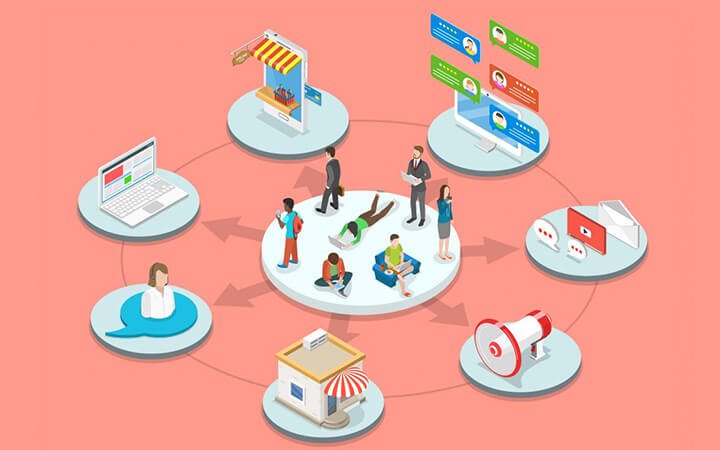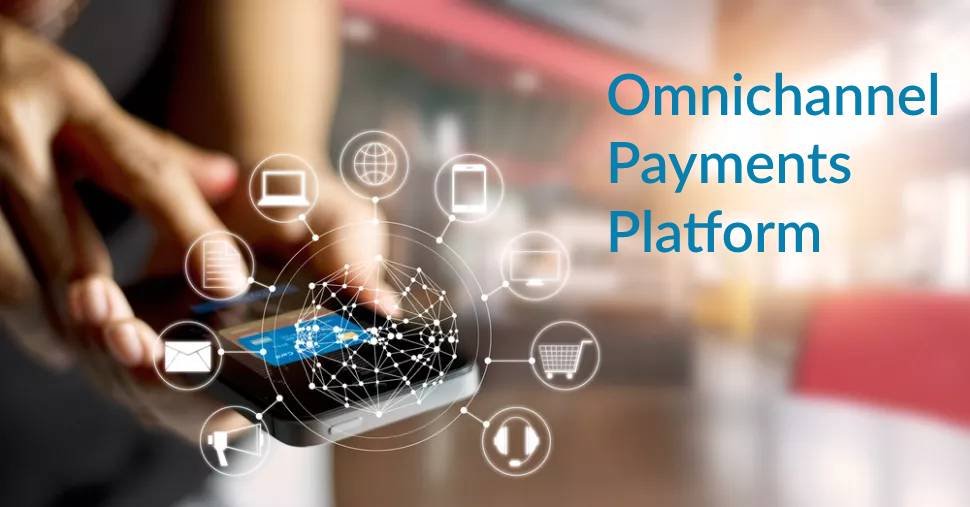Omnichannel payment is a continuous and consistent interaction between the client and the bank. The challenge is to provide customers with the same set of services, both digital and physical. Gives access to banking services from any device, at any working time of the service channel and anywhere. Customers can carry out any banking transaction (subject to regulatory restrictions), whether they use a website, mobile app, call center, bank branch, or any other available channels.
The main goal is to provide a unique customer experience for each client, depending on his preferences and capabilities. Its main difference from multi-channel banking is that it focuses on customer interaction and customer experience.
Omnichannel in Retail Banking
The necessary conditions for creating Omnichannel banking consist of several components:

Integration of distribution channels – organization of interaction and data exchange between distribution channels, preferably in real time:
Only in this case the client will be able to start solving his problem through one channel, stop and continue in another without reminding and re-entering information that has already been provided to the bank.
Customer Orientation and Customer Experience Improvement (Customer Centricity):
Customers expect stable interactions with both physical and digital Omnichannel Payments channels, with simple customer experiences, similar intuitive interfaces no matter which channel they use for their banking transactions. The best result is achieved when the emotional aspect of the interaction exceeds. The rational one, and the client’s behavior will depend to a small extent on the price of services.
Use of detailed marketing segmentation and big data Big data:
Technologies allow you to process any kind of data online, use an extensive mathematical apparatus for forecasting and analysis. Detailed marketing segmentation of clients will allow us to determine behavioral patterns of behavior and ensure the maximum solution of the client’s problems and the development of relations with him.
Why are omnichannel payment solutions needed?
Today the consumer dominates the retail markets. Conservatism and interest in long-term relationships in the interaction of banks with a client faded into the background. Customer centricity and value propositions built on unique customer experiences become drivers.
Banks that focus on this are gaining a significant share of the financial services market. For traditional retail banks, one of the responses to this market challenge is omnichannel payment. Omnichannel banking allows financial institutions to focus on the client and his experience of interacting with the bank, study his experience and, thereby, get an opportunity to improve the quality of customer service.
Let’s consider several cases that illustrate omnichannel payment in practice:
Case 1: The client has applied for a consumer loan
Thanks to the introduction of a credit conveyor. The bank can make a decision in a very short time – no more than 2 hours. However, in reality, the client will receive the service only at the moment when he can use the credit funds. To do this, he must (1) find out about the bank’s decision, (2) withdraw money in cash or make a payment by card / non-cash.
The client receives information about the issued loan in the Internet bank, mobile bank, when authorizing at an ATM, as well as by e-mail and SMS. In each of the channels, he also learns how to use the money. The mobile application additionally provides him with information about the nearest working ATMs. And commissions for withdrawing funds, as well as the ability to set the option for a one-time withdrawal of an amount exceeding the standard limit for the card.
Case 2: For the first time, a client in the Internet Bank is making a foreign transfer from his account, and he has problems filling in some of the details
For support, you can contact via chat, by phone or directly from the Internet bank (IP-telephony). When contacting a bank employee, he immediately sees an incompletely completed document, advises the client and adds the necessary information.
When communicating in chat, some of the functions can be automated. Until a certain moment. The robot leads the dialogue, formulating answers based on the client’s question. An unfilled document and the Knowledge Base. Once received, the answer is saved. The next time the client makes a foreign translation, he will see it as a short memo.
Case 3: After a consultation at the bank’s office about a complex product (mortgage), the client had new questions
A few hours after the meeting, the client calls the contact center. Voice IVR as one of the options at the top level of the menu offers. The topic with which the visit to the office was associated. Further, depending on the wishes of the client.
Case 4: The client regularly receives income in cash and then sends part of the amount by transfers to several relatives
The client has set up an operation template in the Internet bank. Which combines several transfers to different counterparties and calculates their value. A certain% of the transaction amount for each transfer. After that, the client deposits cash through an ATM or terminal and immediately(without going into the Internet bank) calls the operation.





